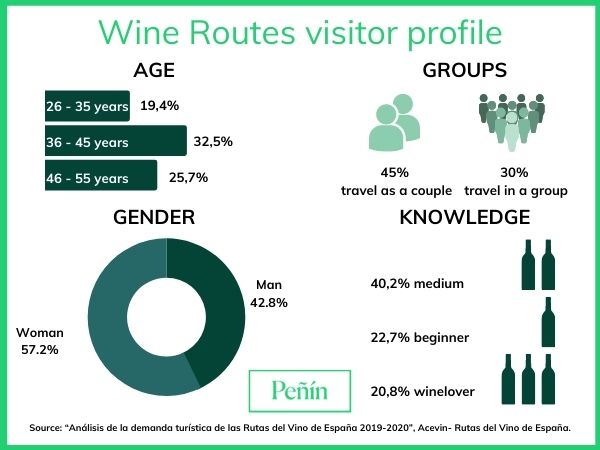8 vineyards in Spain that are a breathtaking sight
Travel with Peñín through some of the country's most unique wine-growing landscapes.

Rural tourism, in which we can also include wine tourism, are some of the activities and experiences that will recover the fastest after the recession, as concluded in a report by the consultancy firm DNA Turismo y Ocio entitled 'In search of scenarios and recipes for a new era in tourism', which was made public last April. According to the study, the fact that these companies provide part of their services in open and natural spaces, which favour the maintenance of social distance and where there is usually no overcrowding, gives visitors a feeling of greater security and will contribute to the rapid recovery of the sector, something that has already been clearly observed with rural tourism during the Christmas and Easter holidays, where many establishments were at 100% occupancy.
But what about the tourists? Is it really a good option to bet on wine tourism? Here are some arguments that support the claim that it is indeed an excellent alternative.

And in the case of wineries, is it worth promoting these activities in the current times we live in? Experiences with wine tourism in countries such as the USA and Australia point to yes.

Not all the wineries that offer wine tourism activities are associated to a Wine Route, but the truth is that nowadays the network of routes all over the national territory is quite wide: at present, about 800 municipalities all over Spain, 32 Regulatory Councils of Denominaciones de Origen and about 70 public or private entities related to the tourism sector and the wine culture are part of the Wine Routes of Spain.
Travel with Peñín through some of the country's most unique wine-growing landscapes.
Chef Dani García tells us how he is experiencing the pandemic and how he sees the current outlook for the industry.
At Peñín we are already focusing on the 2025 Guide, which begins its tasting tour this January to reach October with the most complete Guide to Spanish wines in the world.